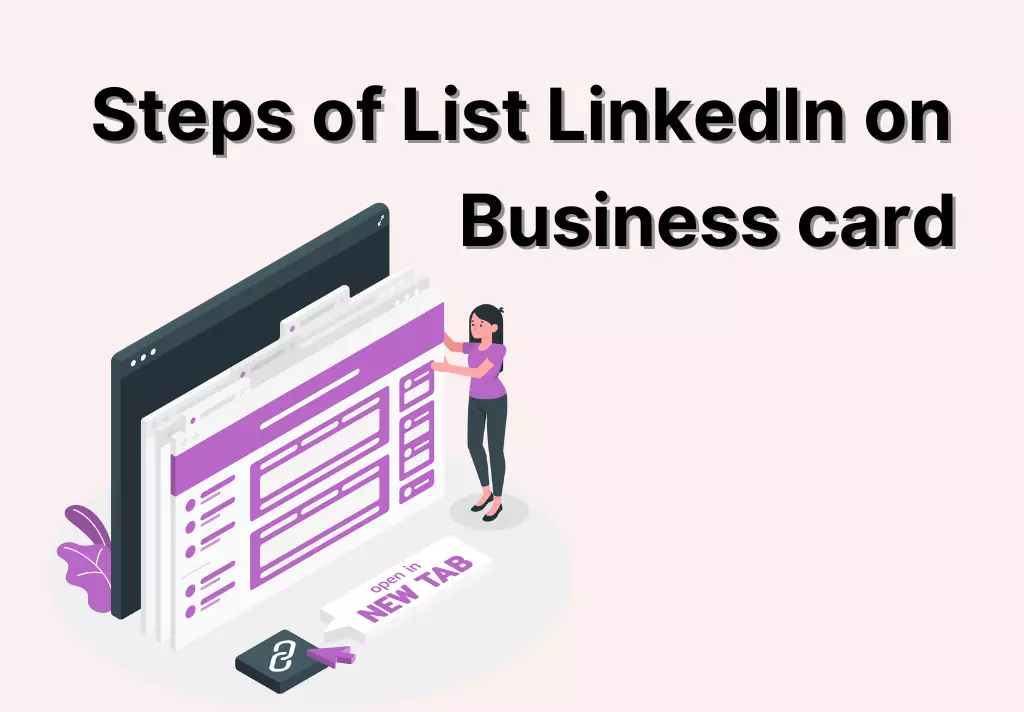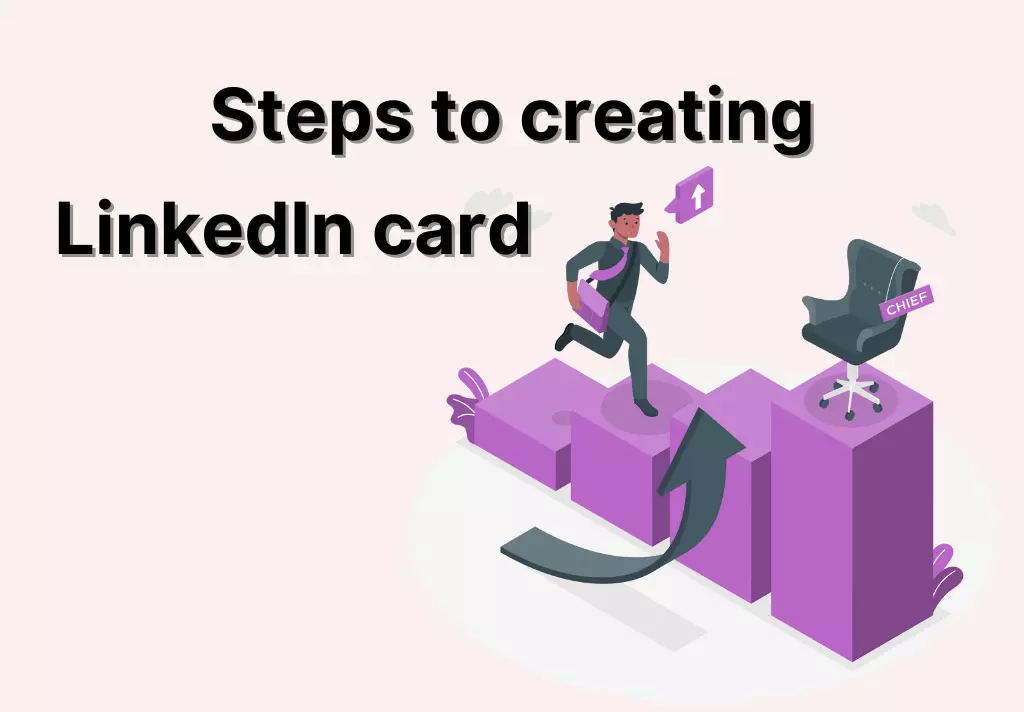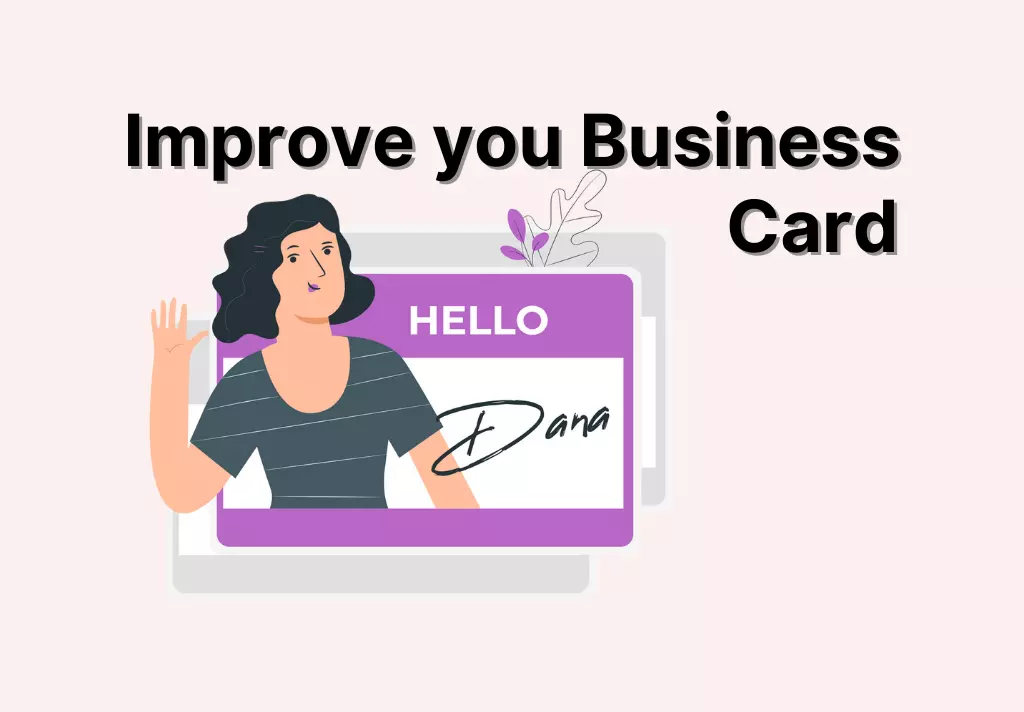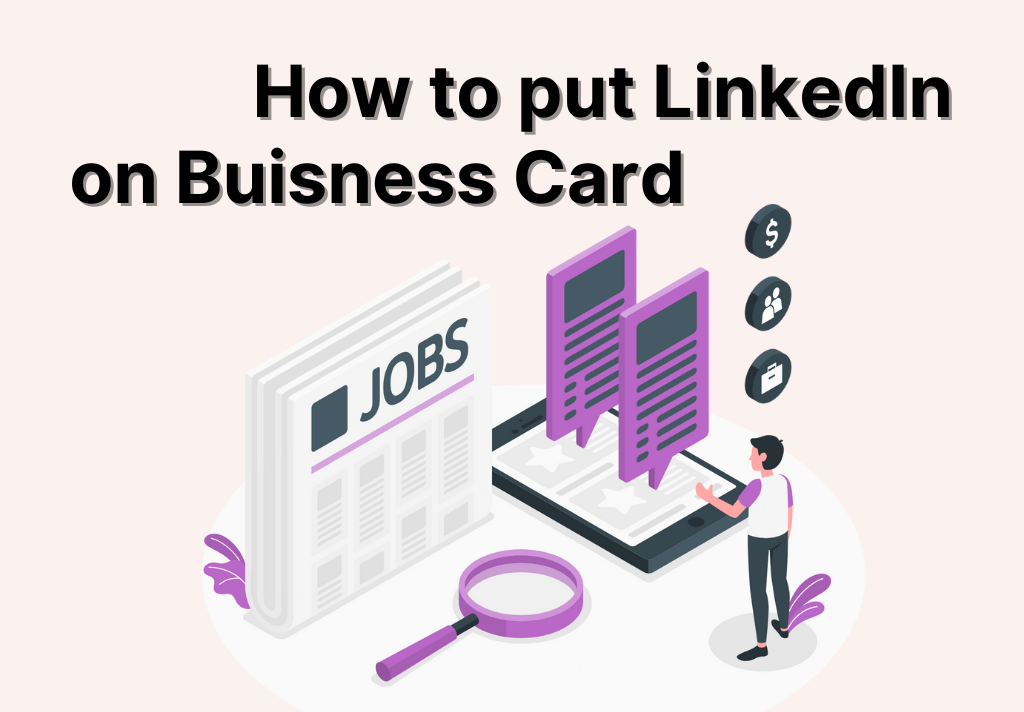A primary public LinkedIn profile URL and a complete LinkedIn profile URL are available to all LinkedIn members. But we will do a step by step guide on How to put LinkedIn on the business card.
When others who aren’t linked to you search for you on LinkedIn, they see your public profile. When others in your LinkedIn connections check you out as a connection, they usually see your private profile.
In addition to its long, clumsy, and difficult to discover in search engines.
The default public profile does not fit well in an email, business card, or banner.
You want a shorter, snappier LinkedIn URL that you can use in emails, marketing materials, Websites, signatures, and other areas where a large URL isn’t acceptable.
What is the best way to include a link to your LinkedIn profile on a business card?
How can you make your business cards and LinkedIn profile stand out as a student or recent graduate?
What Should You Write on Your Business Card? What is the Best Way to Use LinkedIn for Business? How Can You Boost Your LinkedIn Credibility? Are you planning on including your LinkedIn URL on your business card?
If all of these questions are bothering you, then you are in the correct place. This article will defiantly help you and get rid of all your problems.
Table of Contents
Steps of List LinkedIn on a Business Card

Making business relationships, finding new clients, obtaining employment leads, and building a profile among individuals with whom you share a profession are all getting more accessible with the help of social media.
Despite this electronic tumult, the business card remains a vital, tactile, pocket-size marketing asset for you and your firm. There is a field of adaptation at the crossroads of ancient and new, as with every invention. As a result, including your LinkedIn information on your business card is a brilliant marketing move.
- Make a business card design. Many business card printers provide a wide range of design templates from which to choose.
Engage a graphic designer to create the card for a more personalized approach. The investment of hiring a designer may be beneficial because the card may be a client’s first exposure to you and your company. - Fill out the identifying information about your firm. Your name, business name, address, and phone number are all specific information.
- Combine the information from your LinkedIn profile with the data from your other electronic media. A website and email address are now standard features on most business cards. Following these crucial bits of data, input your LinkedIn profile information. http://www.linkedin.com/in/yournamehere is the correct format to use.
Importance to put LinkedIn on the buisness card
A contemporary business card should include a link to your virtual résumé on LinkedIn. The organization you represent is secondary; business cards indicate personal connections. That’s why I produced “The Definitive Guide To Building Your Personal Brand,” which explains why your web presence is equally as vital as your company’s.
Business cards are one of those areas of marketing and advertising that rely on who you are as a person. If your LinkedIn profile isn’t quite ready, make sure to polish it thoroughly before adding the link to your business card. This guide will assist you in swiftly professionalizing your profile: “The LinkedIn Marketing Ultimate Guide.”
Steps of creating a LinkedIn card?

To let people know about and connect with you on LinkedIn, you may put the LinkedIn badge on your website, blog, and emails. You’ll need to know how to copy and paste a line of code into your online text editor to post your badge on your website. You may also give the code to your webmaster and have him add it for you.
- Go to your Profile page after logging into your LinkedIn account.
- On your Profile page, on the right side of your profile, select Edit Public Profile & URL.
- Scroll down to the Public Profile Badge box on the right side of the page and select Create a Badge.
- Follow the instructions on the page, which involve copying a script code and inserting it anywhere you want the badge to appear. After that, choose the graphic selection for your badge. You have numerous width and style options to pick from. Under the badge option, copy the code.
- Paste the code into the website you just copied, blog, or any page where you want your LinkedIn badge to appear. If you’re not in the text editor, the code will appear on your web page or blog instead of the badge. Place your cursor where you’d want the badge to display. Right-click and select Paste from the context menu. After clicking Save, double-check that your badge is shown appropriately.
Improve Your Business Card

Every detail counts in the space of only 14 square inches, whether you’re designing a new business card or redesigning the old one (front and back). Consider these seven strategies to improve your business card when choosing elements for a new design. You might wish to set aside some space for them.
1. Add Your LinkedIn Link.
A contemporary business card should include a link to your virtual résumé on LinkedIn. If your LinkedIn profile isn’t up to snuff, make sure you optimize it before including the link on your card. This post will assist you in swiftly professionalizing your LinkedIn profile.
2. Include a QR Code
It’s simple to make a personalized QR code that links to any website you choose these days. VistaPrint’s card designer includes a QR code generator. Other free QR code generators allow you to print customized QR codes anywhere you like, like on your business card.
QR Code Link Address:
- Facebook page
- Professional portfolio
- Company blog
- Business website
- Optimized landing page
3. What to Include on Your Business Card?
A sound business card is a brand extension that provides the correct, memorable, influential, and relevant information to tell us about yourself and what you do. A decent business card is a chance to interact with a new prospect on a personal level as well as a tool for disseminating your information to competitors.
As a result, any digital networking tools will never replace good business cards since digital networking tools lack the human aspect. Begin with a high-quality business card template or custom design, which will serve as a solid foundation for growth. After you’ve found a suitable design, you’ll need to personalize it by adding important details to your card.
- Logo and Tagline
- Name and Functional Job Title
- Contact Information
- Your Website, But Not Your Homepage
- Skills and Specialties
- Social Media Profiles
- White Space
- Creativity
4. Use a Basic Font
For business cards, sans serif fonts are the most acceptable option. Many typefaces such as Helvetica, Futura, and Arial are simple to read in business card printing. When generating business cards with an online program or utilizing desktop publishing software, they also look great on digital screens.
5. Use White Space
Yes, white space is vital to give its bullet point on the list. Have you ever seen an information-packed business card? The purpose of business cards is to entice prospects to engage with you, not overwhelm them. And no one wants to be around clutter.
Of course, while designing a business card, you’re working in a bit of area. Only provide the most vital information to avoid clutter. It’s important to remember that business cards have two sides. Don’t be frightened to go backward. You’ll be able to double the amount of space accessible.
Of fact, white space does not have to be the color “white.” It simply refers to a blank area on your card where the content may breathe. Individual pieces should shine out. Take actions to save space, such as:
- Deleting titles that are no longer relevant
Using icons instead of text - Selecting minimalist template designs
6. Communicate effectively
Communicate in the language of your target market. You may leave a lasting impression on your customers with good brand awareness by conveying the main product or service your company provides clearly and distinctively.
7. Consider a call to action
Giving your contact information is one thing. It’s preferable to urge new contacts to put that information to good use. Include a “call to action” on your business card, as recommended by marketing best practices.
Add “Contact Me!” just above your contact information as a simple method to accomplish this. A slight shove might have a significant impact. See “The Definitive Guide to Crafting Calls to Action in Your Content” and “How To Use The Four Elements Of Any Action In Your Online Marketing Initiative” for more information on writing high-converting calls to action.
Also read: What to include in a Graphic Design Portfolio [2022]
Conclusion
Your business card is typically based on the initial impression of new clients/customers and even new friends. Even though these five improvements are undoubtedly worthwhile, I would advise upgrading your card with two aims in mind: 1) make an impression and 2) keep a professional air.
Keep the conversation going

Hi, i’m Akash shaw creator of Adsvast agency , Hello, I am a perfectionist with deep love for aesthetics,
a graphics designer with expertise in logo design and branding.
My only goal with Notamartwork is try to help others to freelancers to get jobs and learn how to do freelancing.
